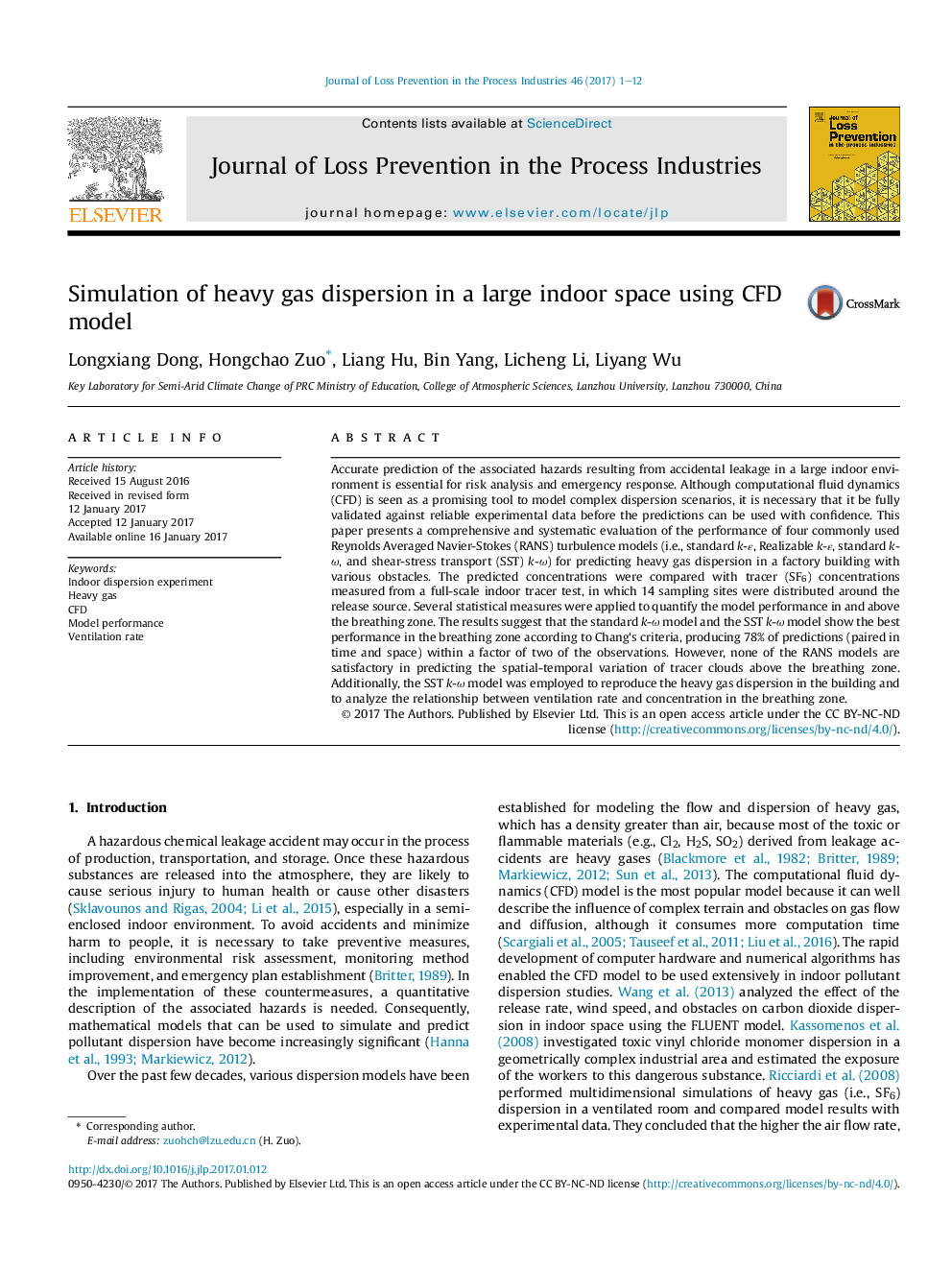| کد مقاله | کد نشریه | سال انتشار | مقاله انگلیسی | نسخه تمام متن |
|---|---|---|---|---|
| 4980197 | 1453262 | 2017 | 12 صفحه PDF | دانلود رایگان |

- Full-scale field experiments on heavy gas leakage in a large building were carried out.
- CFD technique was applied for modeling of heavy gas dispersion using four RANS models.
- The predicted results were validated against experimental data in terms of concentration.
- The standard and SST k-Ï models showed the best performance in the breathing zone.
- None of the RANS models were satisfactory above the breathing zone.
Accurate prediction of the associated hazards resulting from accidental leakage in a large indoor environment is essential for risk analysis and emergency response. Although computational fluid dynamics (CFD) is seen as a promising tool to model complex dispersion scenarios, it is necessary that it be fully validated against reliable experimental data before the predictions can be used with confidence. This paper presents a comprehensive and systematic evaluation of the performance of four commonly used Reynolds Averaged Navier-Stokes (RANS) turbulence models (i.e., standard k-ε, Realizable k-ε, standard k-Ï, and shear-stress transport (SST) k-Ï) for predicting heavy gas dispersion in a factory building with various obstacles. The predicted concentrations were compared with tracer (SF6) concentrations measured from a full-scale indoor tracer test, in which 14 sampling sites were distributed around the release source. Several statistical measures were applied to quantify the model performance in and above the breathing zone. The results suggest that the standard k-Ï model and the SST k-Ï model show the best performance in the breathing zone according to Chang's criteria, producing 78% of predictions (paired in time and space) within a factor of two of the observations. However, none of the RANS models are satisfactory in predicting the spatial-temporal variation of tracer clouds above the breathing zone. Additionally, the SST k-Ï model was employed to reproduce the heavy gas dispersion in the building and to analyze the relationship between ventilation rate and concentration in the breathing zone.
Journal: Journal of Loss Prevention in the Process Industries - Volume 46, March 2017, Pages 1-12